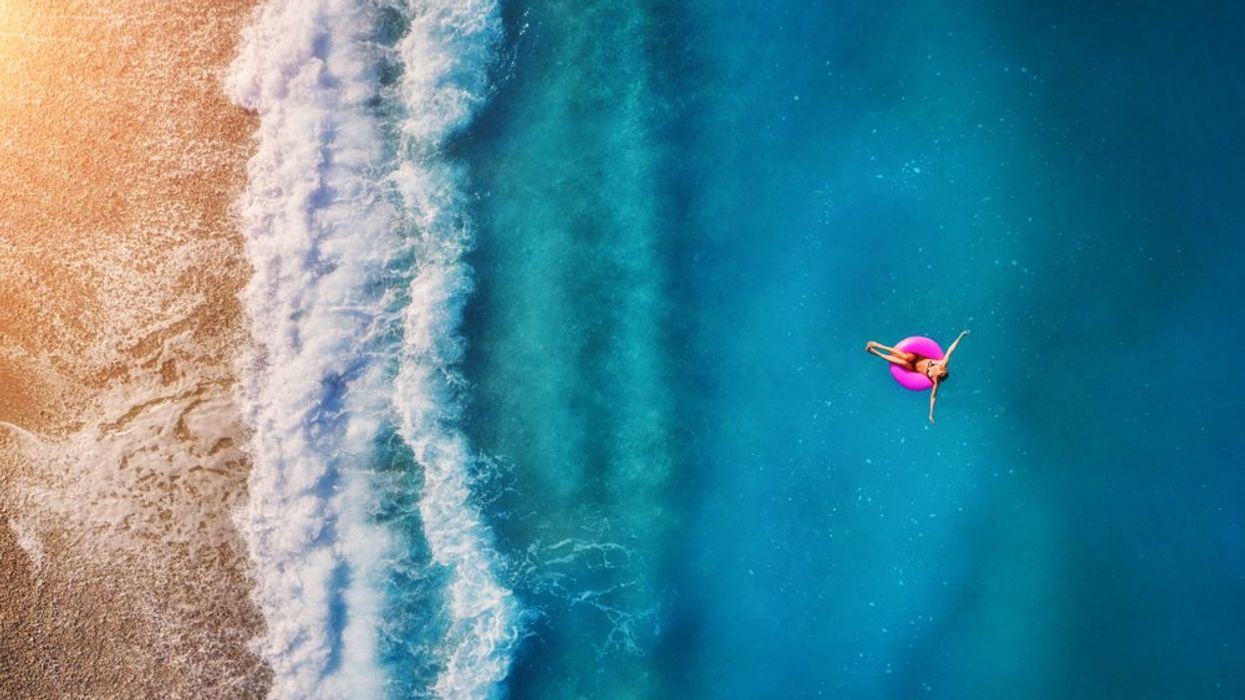(CNN) — The color of the ocean has changed significantly over the last 20 years and human-caused climate change is likely responsible, according to a new study.
More than 56 percent of the world’s oceans have changed color to an extent that cannot be explained by natural variability, said a team of researchers, led by scientists from the National Oceanography Center in the UK and the Massachusetts Institute of Technology in the US, in a statement.
Tropical oceans close to the equator in particular have become greener in the past two decades, reflecting changes in their ecosystems, according to the study published Wednesday in the journal Nature.
The color of the ocean is derived from the materials found in its upper layers. For example, a deep blue sea will have very little life in it, whereas a green color means there are ecosystems there, based on phytoplankton, plant-like microbes which contain chlorophyll. The phytoplankton form the basis of a food web which supports larger organisms such as krill, fish, seabirds and marine mammals.
It’s not clear exactly how these ecosystems are changing, said study co-author Stephanie Dutkiewicz, senior research scientist in MIT’s Department of Earth, Atmospheric and Planetary Sciences and the Center for Global Change Science. While some areas are likely to have less phytoplankton, others will have more – and it’s likely all parts of the ocean will see changes in the types of phytoplankton present.
Ocean ecosystems are finely balanced and any change in the phytoplankton will send ripples across the food chain. “All changes are causing an imbalance in the natural organization of ecosystems. Such imbalance will only get worse over time if our oceans keep heating,” she told CNN.
It will also affect the ocean’s ability to act as a store of carbon, Dutkiewicz said, as different plankton absorb different amounts of carbon.
While the researchers are still working to unpick exactly what the changes mean, what is clear, they said, is that the changes are being driven by human-induced climate change.
‘Clear trend’
The researchers monitored changes in ocean color from space by tracking how much green or blue light is reflected from the surface of the sea.
They used data from the Aqua satellite which has been monitoring ocean color changes for more than two decades and is able to pick out differences that are not visible to the human eye.
They analyzed color variation data from 2002 to 2022 and then used climate change models to simulate what would happen to the oceans both with additional planet-heating pollution and without.
The color changes matched almost exactly what Dutkiewicz predicted would happen if greenhouse gases were added to the atmosphere – that around 50 percent of our oceans would change color.
Dutkiewicz, who has been running simulations that showed the oceans were going to change color for years, said she is not surprised at this finding.
“But still I found the results very sobering; yet another wake-up call that human induced climate change [has] significantly impacted the earth system,” she told CNN via email.
Dutkiewicz told CNN it was difficult to say whether color changes could become visible to humans if the process continues.
“If a big tipping point was reached in some places: maybe. Though you’d have to study the colors for a while to be able to pick up on the changes,” said Dutkiewicz.
Next up, Dutkiewicz will try to better understand the color changes in different ocean regions, as well as looking into what might be causing them, she said.
The-CNN-Wire
™ & © 2023 Cable News Network, Inc., a Warner Bros. Discovery Company. All rights reserved.

















































